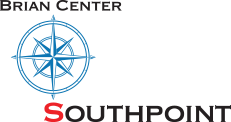
Physical therapy is an essential component of healthy post-surgery rehabilitation. It involves injury treatment, healing, and prevention. Patients recovering from orthopedic surgeries can use physical therapy to improve strength and mobility and manage pain without medication. Even patients recovering from non-orthopedic (internal problems) can regain strength and endurance with physical therapy.
Whether working one-on-one with a physical therapist or doing exercises alone, it is important to follow your doctor’s instructions. Here are some of the ways physical therapy can help you to recover faster.
Reducing Inflammation
The circulatory system helps deliver blood throughout the body. After surgery, the goal is to improve blood circulation to the site of your injury. Encouraging gentle movement of the limbs helps move fluid out of the tissues. As a result, swelling is reduced.
Increasing Range of Motion
Muscles become stiff after surgery. Therefore, one of the biggest goals of physical therapy is to increase range of motion for improved functioning of the bones, muscles, and soft tissues involved. Physical therapists implement the following techniques to increase range of motion:
Massage: Massage brings blood and nutrients to the injured area to repair the damaged soft tissue. It also breaks up scar tissue.
Stretching: In addition to treating pain, stretching makes joints more flexible. It’s normal for scar tissue to form after surgery. Stretching ensures it does not get in the way of your rehabilitation.
Strengthening Exercises: Post-operative exercises help you to increase strength and improve function. A physical therapist will provide specific exercise instructions for your rehabilitation.
Pain Management
Techniques used to increase range of motion also assist in reducing pain. There are several other methods of physical therapy for pain management as well.
Electrical stimulation: Short term pain relief is delivered by low voltage electrical current through the skin to facilitate muscle contractions. Nerve stimulation also improves strength and relieves muscles spasms.
Ultrasound machine: The high or low-frequency sound waves from ultrasound machines can be used to penetrate the muscles, resulting in deep tissue and muscle warming. Ultrasound treatments promote tissue relaxation to stop muscle spasms and increased circulation to promote healing and reduced inflammation.
Short wave diathermy: Heat therapy is provided via short wave radio frequency to decrease pain, inflammation, and edema. Short wave diathermy also improves range of motion to the affected joint and increases blood flow to the area.
Importance of Skilled Nursing Care
Many times, physical rehabilitation after surgery is not enough. Combining rehabilitation with skilled nursing care is often the most effective way to heal post-surgery. With skilled nursing care, patients receive rehabilitation plus 24-hour medical assistance with issues such as:
- wound care
- medication administration
- speech and occupational therapies
- hygienic tasks
- personal grooming
Brian Center Southpoint is a full-service rehabilitation center offering state-of-the-art inpatient and outpatient therapies in a warm and inviting environment. Services include individualized treatment programs by our skilled physical therapists and comprehensive skilled nursing care. Our experienced, caring staff help patients regain strength, capability and confidence after surgery. All of the nursing staff at the Brian Center is certified in EKG and IV treatments, for the comfort and expert care of our patients.
Learn more about how our physical therapy services assist patients in achieving their highest level of functional mobility.
